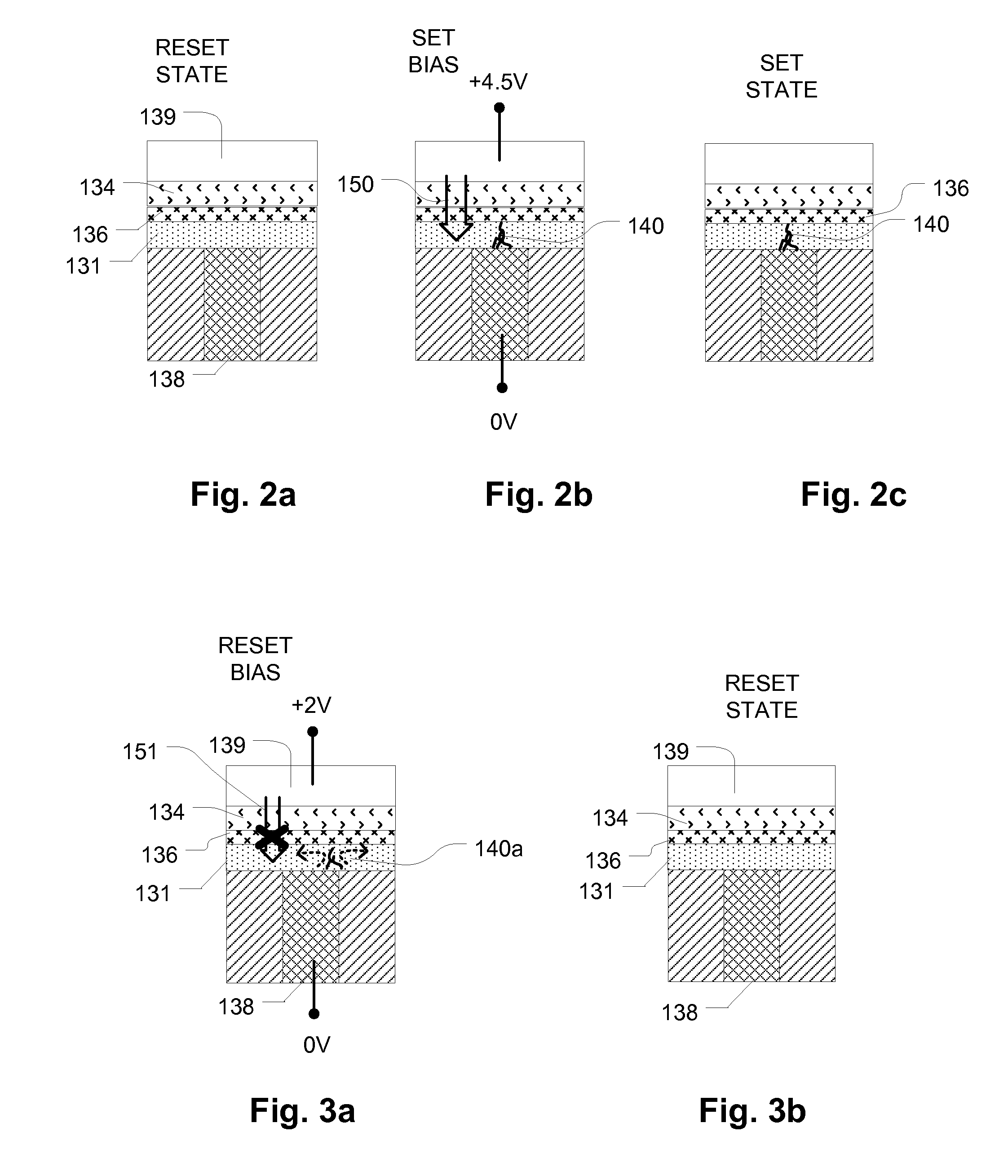Unipolar programmable metallization cell
a metallization cell, unipolar technology, applied in the direction of digital storage, instruments, electrical apparatus, etc., can solve the problems of complex peripheral circuitry, reduced array density, and inability to adapt to many 3d memory structures
- Summary
- Abstract
- Description
- Claims
- Application Information
AI Technical Summary
Benefits of technology
Problems solved by technology
Method used
Image
Examples
Embodiment Construction
[0020]A detailed description of embodiments of the present invention is provided with reference to the FIGS. 1-7.
[0021]FIG. 1 illustrates a cross-sectional view of a PMC cell including a thermal reset structure. The PMC cell includes a first electrode 100, which in this example comprises a plug within a via through an interlayer dielectric 111. The cell includes a dielectric layer 102 overlying and contacting the first electrode 100. The dielectric layer 102 can be comprised of any dielectric material that is suitable for allowing the diffusion of conductive ions through the layer, and formation of a conductive bridge through the PMC cell. Such dielectric layers can be silicon dioxide, silicon nitride, silicon oxynitride, metal oxides, high-K dielectric materials and other materials that can support electrolytic formation and destruction of conducting bridges therethrough.
[0022]A conductive ion-barrier layer 104 overlies the dielectric layer 102. The conductive ion-barrier layer 104...
PUM
 Login to View More
Login to View More Abstract
Description
Claims
Application Information
 Login to View More
Login to View More - R&D
- Intellectual Property
- Life Sciences
- Materials
- Tech Scout
- Unparalleled Data Quality
- Higher Quality Content
- 60% Fewer Hallucinations
Browse by: Latest US Patents, China's latest patents, Technical Efficacy Thesaurus, Application Domain, Technology Topic, Popular Technical Reports.
© 2025 PatSnap. All rights reserved.Legal|Privacy policy|Modern Slavery Act Transparency Statement|Sitemap|About US| Contact US: help@patsnap.com



